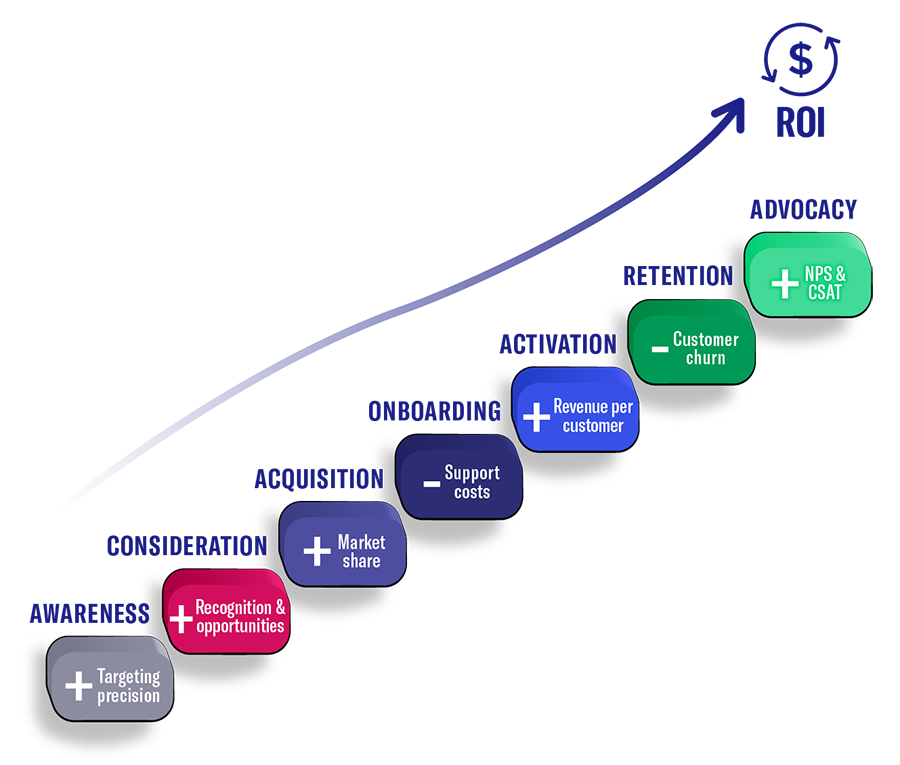How to Combat the Death of Third-Party Cookies With First-Party Data Strategy
December 13, 2021First-party data strategy has gone from nice to have to necessity in record time thanks to the death of third-party cookies.
Nearly 40% of ad buyers say a lack of first-party data is their greatest concern, and 62% of marketers are strategizing around first-party data to prepare for a cookieless world.
Why? Because increasingly strict privacy laws and updates to user-tracking capabilities are eliminating the options for identifying and targeting customers.
Brands that don’t have access to — and a way to activate — authenticated first-party data will find themselves at the mercy of expensive walled gardens (often owned by the same tech giants instituting industry changes in the first place).
To combat the death of third-party cookies and develop an effective first-party data strategy, start by understanding where you fall on the customer data maturity spectrum and what your immediate next steps should be.
For example, ActionIQ customer e.l.f. Beauty considers first-party data a “gold mine” that can be leveraged to inform consumer journeys given current privacy changes. Hear the brand’s story:
Understand First-Party Data Maturity
The more direct access you have to your end customers — and the higher the amount of authenticated customer traffic you have across your digital channels — the greater your customer data maturity.
While no two brands are exactly the same, the industry you operate in is often an indicator of where you fall on the spectrum. For instance, organizations that sell consumer packaged goods are typically far removed from their end customers, receiving less digital traffic than other businesses. This means they heavily rely on third-party cookies to understand customer behavior and inform paid media campaigns.
Meanwhile, brands in the travel and hospitality industry may have substantially higher levels of direct digital traffic because of the products and services they sell. But much of this traffic remains anonymous. These brands have a head start in building out their first-party data strategies, but they must still transform unknown customers into known ones.
And then there are brands that have collecting and authenticating customer data built into their business practices, such as those in the financial services and media streaming industries. These organizations have all the building blocks of a first-party data strategy at their disposal, but may not be sure how to leverage it or maximize its value.
No matter your level of customer data maturity, your end goal is the same: Preparing your brand for a privacy-first world. But by understanding where you fall on the customer data maturity spectrum, you’ll have a better idea of where to start.
Consider luxury fashion brand Michael Kors, which has been prioritizing tactics to refine its customer data and using ActionIQ’s toolset to target unknown visitors onsite. Watch the short video below to learn more:
Build Out Your First-Party Data Strategy in Phases
The best first-party data strategies aren’t built in a day — they’re the result of a carefully considered approach.
- Brands with less access to authenticated customer data will likely need to start with short-term fixes. In order to meet immediate advertising needs, that may mean temporarily relying on walled gardens to support customer acquisition and exploring tactics that don’t rely on identifiers, such as contextual advertising.
- The next phase is focused on future-proof strategies, such as improving customer data collection and building relationships with other brands to offset the loss of anonymous third-party data. This is where prioritizing consumer consent and early authentication becomes essential.
- The third and final phase is all about connecting your customer data and driving results. By calibrating your marketing technology stack and making identity the core of your first-party data strategy, you can begin testing, measuring and optimizing.
Your customer data maturity level may impact where you begin, but all organizations should ensure they’ve taken the necessary steps across each phase to transform data collection into revenue generation.
As an example of developing an effective first-party data strategy, e.l.f. Beauty is leveraging ActionIQ to gather important data points and map customer behaviors so it can spot trends and extract insights quickly:
Master Your First-Party Data Maturity
Regardless of your customer data maturity — or which phase for building out a first-party data strategy you start with — one thing is certain: Change will be necessary.
Consumers’ demands for privacy are growing right alongside their expectations for tailored, highly relevant brand interactions. In order to deliver personalized, impactful customer experiences in a privacy-first world, you must refine how people, technologies and processes power your organization.
The good news is, your customers are willing to share the data you need in exchange for better experiences. Sixty-six percent of consumers say they’re willing to share personal information in exchange for additional value.
And brands are taking notice, with more than half of marketers planning to provide shoppers with discounts and other services in exchange for their data during the most recent holiday season. Meanwhile, 67% of marketers are investing in customer data platforms to help gather, analyze and activate customer data.
But don’t expect a silver bullet to solve all your problems. Lasting first-party data strategies will take time to get right — it’s a process every brand will have to align to their unique business needs and an evolving privacy landscape.
Just remember: The big winners in our privacy-first future will be the brands that plan accordingly.
Learn More
Download The Post-Cookie Marketing Playbook to understand where you fall on the customer data maturity spectrum, what it takes to develop your first-party data strategy and the best place to start based on your unique business needs.
This post first appeared on the ActionIQ blog. To see the full article, click here.


